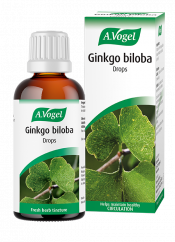What do chilblains look and feel like?
Chilblains most often occur on the fingers and toes, though the face, legs and arms can occasionally be affected as well. There are some key symptoms associated with chilblains. These are:
- Itchiness
- Red, blotchy skin
- Swelling
- Pain
- Pins and needles sensation
My Self-Care Tip: How to avoid chilblains
Prone to chilblains? Here's how you can avoid the problem:
How did I get chilblains?
Chilblains generally occur when we have been exposed to the cold and, as a result, the issue is much more likely to occur in the winter.
Poor circulation and low blood pressure may also make the problem more likely to occur.
What vitamins are good for chilblains?
A key nutrient for supporting circulatory health is vitamin C. To get a little more of this, a supplement may be helpful. Our Nature C tablets are a good option as they are all-natural and so are easily absorbed by the body. Foods like tomatoes, broccoli and peppers also offer a decent vitamin C top-up.
How do you treat chilblains?
To manage chilblains, you really need to work on improving the body's overall circulation. Here's what you can do:
Ginkgo - You could look at the herbal remedy Ginkgo biloba, which has historically been seen as supporting healthy circulation.
Clothing – Wear non-constricting shoes and avoid tight gloves.
Exercises for stimulation – try to incorporate some gentle exercises such as ankle rotations. You can read more about exercising to improve circulation here.
Diet – Aim to eat iron-rich foods (legumes, nuts, seeds, wholegrains) and try using more ginger and garlic in your cooking, as both of these can help stimulate better circulation.
Drinks - Drink plenty of plain water throughout the day, and try drinking a cup of green tea with lemon regularly to keep blood flow moving.
Caffeine intake – Lots of caffeine can negatively affect circulation, particularly to the extremities of the body, so it is a good idea to reduce your intake.
Cut out smoking – This is particularly bad for our circulation, so it is a good idea to seek advice on cutting down your cigarette use if you smoke and are prone to circulatory issues like chilblains.
What is the difference between chilblains and Raynaud's?
Both chilblains and Raynaud's are circulatory issues; however, there are a few key differences between the two.
| Raynaud's | Chilblains | Both | |
| Causes | Can occur when stressed or anxious | Can occur when exposed to cold then very warm temperatures | Occur when exposed to the cold |
| Symptoms | Difficulty moving area, numbness, pale/blue colouring to the skin | Swelling, itchiness | Pain, pins and needles, red, blotchy skin |
| Treatment | Incorporate relaxing activities into your routine | Try a painkiller to ease severe pain. Anti-inflammatory creams or gels may help |
Work on improving circulation and keep your body warm when it is cold |





-new-web-carton.png?m=1710946347)



